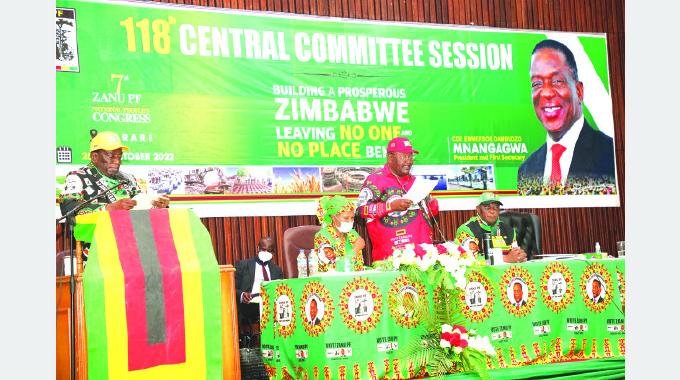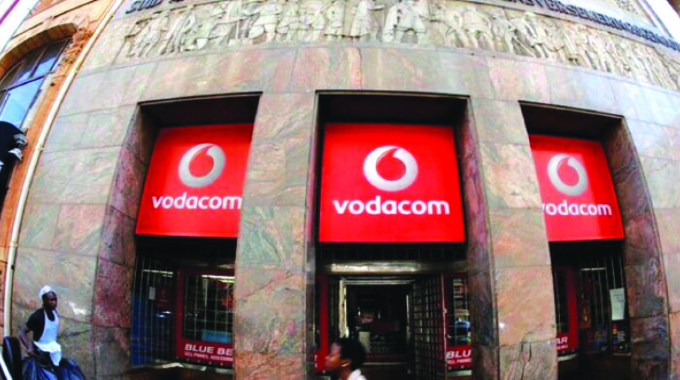Zanu PF Congress underlines development path

Lovemore Chikova-Development Dialogue
The on-going Zanu PF National People’s Congress, that will be officially opened today by the party President and First Secretary, President Mnangagwa, separates the ruling party from its opponents who thrive on theorising developmental issues.
The ruling party has been practical in its approach to development, implementing various projects and programmes across the country in the last five years.
More importantly for the delegates, development has already started bearing fruits in their localities, transforming their lives in various ways.
Ask any delegation about this direction, and they will tell you about the words: “development, industrialisation, modernisation, technology, eradicating poverty and leaving no place and no one behind”.
They will also add with a bit of a freshened face: “Nyika inovakwa nevene vayo”.
This is what makes Zanu PF a colossal party entrenched in the hearts of the people, as compared to its competitors who thrive on promising heaven and earth when the people can see through their disguise.
The congress comes at a time when Zanu PF has changed its approach, taking back the party to work for the people, being a listening party that stands for the development of the country.
The smiles we are all seeing on the face of the delegates represent those of many others left behind as they emanate from the realisation that indeed the party is working for the people in development.
No delegate can say their area has been left behind in terms of developmental projects that are uplifting the lives of the ordinary people.
President Mnangagwa has since made it clear that the Second Republic will accelerate rural modernisation and industrialisation to create jobs, improve livelihoods and transform lives of the once marginalised rural communities.
The National Development Strategy 1 (NDS1) is very clear on the importance of rural development and this is being transformed into practical action.
It is not only in rural areas where development is taking place, urban areas where the opposition has failed, are being transformed by Zanu PF.
The agenda is inclusive, which is the true nature of the party’s development agenda, which is changing attitudes and thinking towards building a prosperous country.
The congress’ implications are that Zanu PF will emerge stronger, the development agenda will be endorsed and accelerated and no one and no place will be left behind as the country marches towards achieving Vision 2030 of attaining an upper middle income society.
The modernisation agenda, already endorsed by the party, encompasses common prosperity where everyone benefits and is lifted out of poverty.
In fact, a strong will of continuity will emerge at the end of the congress, with the party supporters galvanised to work even harder for the country and their families.
Roads and dams are being constructed and rehabilitated throughout the country, with some projects that had been long forgotten being revived under the New Dispensation.
Delegates from the Matabeleland region — Matabeleland South, Matabeleland North and Bulawayo — come to the congress on the background of massive developmental programmes being undertaken by the ruling party’s Government.
The same applies to all other provinces — Masvingo, Manicaland, Mashonaland East, Mashonaland Central, Mashonaland West, the Midlands and Harare — where development has been accelerated.
The government has been addressing perennial problems in many sectors in the Matabeleland region, including the provision of water to the country’s second largest city — Bulawayo.
There is Lake Gwayi-Shangani in Matabeleland North that is nearing completion after being mooted in 1912, with implementation of the project failing to take off under the previous administrations.
It only took a developmental oriented Zanu PF in the New Dispensation to press for construction workers to be on site for the construction of the dam.
Being part of the National Matabeleland Zambezi Water Project, the lake will, upon completion, provide a permanent water solution for Bulawayo and the Matabeleland region.
The other importance of the lake to the Matabeleland region, which is often stalked by droughts, is to create an irrigation greenbelt for communities along the 252km pipeline taking water to Bulawayo.
The roads in this region are being reconstructed or rehabilitated, with work on the important artery linking Beitbridge, Bulawayo and Victoria Falls already started, with some areas being completely redone.
Then there is the Hwange Power Station Expansion Project, which despite benefiting the whole country, has a major impact on the Matabeleland region, as its development boosts local business and creates employment.
Significant progress has been made on the US$1,5 billion Hwange Thermal Power Station Unit 7 and 8 expansion project, whose completion is now more than 84 percent as the country inches closer to energy self-sufficiency.
In Matabeleland South, the Beitbridge Border Post modernisation project already has its Phase 1 complete, changing the whole outlook of the border town.
The Second Republic is carrying out various projects expected to speed up growth of Lupane Town, the provincial capital of Matabeleland North.
The Bubi-Lupane Dam and irrigation is now operational, supplying water to the new town and providing villagers with irrigation facilities.
In Binga, roads are being constructed in the district under ERRP, while Government is working on re-modelling the Bulawayo Kraal Irrigation Scheme, a massive irrigation project in the district.
The greenlight has been given for the construction of a vocational training centre and a new border post, setting up of a nursing school at Binga Hospital and the refurbishment and operationalisation of the hospital mortuary.
Another development phoenix, the Tuli-Manyange Dam, is being constructed in Matabeleland South and expected to hold at least 35 million cubic metres, resulting in the creation of irrigation schemes within its proximity.
The New Dispensation has transformed Victoria Falls city into a business and tourism hub, becoming the gateway for capital and a business magnate.
To spearhead development in Victoria Falls, the Government has set up Mosi-oa-Tunya Development Company as a special purpose vehicle, especially for tourism infrastructure development.
The company will spearhead tourism infrastructure development in Masuwe Estate in Victoria Falls, in partnership with relevant Government ministries and agencies and private sector partnership.
Delegates from Mashonaland East province will point to various developmental programmes, including roads rehabilitation and the setting up of the Tabudirira Fruit and Vegetable Processing Hub, which is aimed at empowering youths and promoting value addition of local farming produce.
Dams like Muchekeranwa and Chivi have been constructed, with irrigation schemes being established.
In Masvingo, Zanu PF has been closely working with the people, establishing the Mwenezi mapfura/amarula processing plant at Rutenga in Mwenezi, setting up irrigation schemes and is on the verge of fully utilising the giant Tugwi-Mukosi Dam for the people.
Clinics, schools, roads and bridges have been built under devolution in the province.
Big dam projects like Marovanyati Dam in Buhera in Manicaland are fully operational, benefiting the people with food security through irrigation schemes.
Since the last Zanu PF congress, infrastructure development has been one of the major keystones of the party’s successes, with almost every area being spruced up to aid economic growth.
Conversations about the ongoing infrastructure development dominated party gatherings, rallies, meetings and even social media discussions, from both supporters and non-supporters.
The re-construction of the Harare-Beitbridge Highway became the anchor infrastructural development project that amazed everyone with the speed at which it was being carried out.
The more 500-kilometre highway is almost completely rehabilitated with a new surface laid out on a widened tarmac.
To ensure equitable development, President Mnangagwa launched the Emergency Road Repair Programme Phase 2, which extended road rehabilitation to rural areas, towns and cities.
Already, some of the major roads in cities and towns have been rehabilitated and made navigable.
Work on the expansion of Robert Gabriel Mugabe International Airport is another milestone achieved by the party in the period under review.
Under Zanu PF, there has been a transformation in terms of the approach to education, with the new Education 5.0 bearing fruits in terms of innovation and technological advanced.
A number of innovations came out of innovation hubs set up at universities, which are ready for mass production.
In tourism, the anchor project has been the National Tourism Recovery and Growth Strategy, which was approved by Cabinet and aimed at encouraging investment in the tourism sector.
Under the devolution development model, there was an acceleration of development at different levels of governance, especially at the district and ward levels — the lowest tiers of the governance matrix ladder.
Projects under devolution included building of new clinics and schools and rehabilitation of the existing ones, upgrading of roads, construction of bridges and water bodies and establishment of irrigation schemes in various parts of the country.
The projects were mainly concentrated in the crucial sectors of health, education, water and sanitation and road infrastructure.
The projects were being implemented in line with the National Development Strategy 1 and as part of attaining Vision 2030 of achieving an upper middle income economy.









Comments